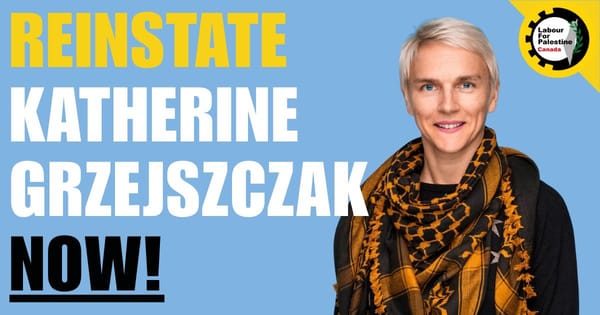I can’t imagine the bigwigs at the Bank of Canada are pleased right now. On March 8, the Bank announced a pause in its pattern of interest rate hikes. In the face of flat GDP growth in the fourth quarter of fiscal year 2022, the central bank opted to hold its 4.5 per cent policy rate steady. As the interest rate announcement noted, “Restrictive monetary policy continues to weigh on household spending, and business investment has weakened alongside slowing domestic and foreign demand.”
At the same, employment remains, as the Bank put it, “surprisingly strong.” In other words, aggressive monetary tightening hasn’t managed to impose the costs on workers that the policymakers imagined it would. Indeed, February’s Labour Force Survey, released two days after the Bank’s interest rate announcement, shows labour market resilience despite an overall economic slowdown. While rate hikes have choked growth out of the economy and ratcheted up borrowing costs and interest payments, they haven’t managed to crush job and wage growth.
Although hourly wage growth continues to lag inflation, the gap is closing. After two months of mild deceleration, in February year-over-year wage growth was 5.4 per cent, half a percentage point above where it was a month prior. With inflation sitting at 5.9 per cent, hourly wage growth is the closest to inflation it’s been since October 2021.
At the same time, one does have to be cautious when interpreting the Labour Force Survey’s wage data. The survey doesn’t control for changing job composition, so we might be viewing the impact of some lower wage workers losing jobs while higher earning workers gain jobs. Additionally, wage growth is highly uneven. Some low wage sectors, such as accommodation and food services, are posting record hourly wage growth. Yet, at the time, over half of all industries continue to experience real wage losses (i.e., wage growth below the rate of inflation). Nevertheless, average hourly wage growth appears to be moving in the opposite direction that we’d expect under conditions of monetary tightening, which I’m sure is much to the consternation of Tiff Macklem and company.
The Conference Board of Canada is further warning of the inflationary pressure being generated by persistent wage growth. It notes that, “While rising wages allow households to navigate the rising cost of living, they also risk feeding inflation.” They add: “In recent quarters, growth of employment and hours worked has outstripped output growth, a mismatch that has seen labour productivity decline in three out of four quarters in 2022. With little or no productivity growth, wage growth fuels consumer demand while increasing supply-side pressure by raising unit labour costs. It is, therefore, inflationary.” Capitalism seems to leave little room for workers to grow the wage share.
Furthermore, according to the February jobs report, unemployment remained unchanged and historically low at 5 per cent. Employment mostly held steady, while the economy netted roughly 22,000 jobs, many in healthcare and social assistance where workers are desperately needed. Hours worked are up slightly as well. Core-aged and young workers stayed employed at comparable levels, while employment rose among older workers, 55 to 64 years of age, particularly for older women. Employment among both men and women in this age group has steadily grown since August 2022.
In fact, women overall continue to post strong job growth figures. Employment among women over 15 years of age was 58.9 per cent in February 2023, up from 58.1 per cent in August 2022. Although this is still slightly lower than the high of 59.2 per cent recorded in October 2007, women have accounted for 61 per cent of employment growth since August 2022. On the downside, researchers at Unifor report that the gender wage gap increased in 2022 for the first time since 2016. Women’s pay was 13.5 per cent lower than men’s last year, a widening of 5.1 per cent. Despite historically strong job growth, women continue to face systemic pay discrimination, especially those who aren’t members of a union.
The above job growth is further evidence that there’s no sign of a labour shortage in the sense much popular commentary means this (i.e., a pool of people sitting around unwilling to work). Compared to a year ago, there are now roughly 410,000 more workers across the country, a growth of the labour force amounting to 2.1 per cent. Rather, where employers lack workers, it’s because demand for goods and services has outstripped the economy’s capacity to supply workers. Of course, in many cases the logical thing for employers to do would be to offer higher wages to attract the workers they need away from lower paying jobs. Instead, bosses have mostly whined about the “labour shortage” and asked governments to weaken labour protections and increase the pool of low-skilled, low-wage workers. We’d all be better off if governments ignored businesses’ calls, but they largely haven’t.
While Canada’s labour market has softened somewhat since the beginning of the Bank’s program of interest rate hikes, Statistics Canada’s monthly jobs reports continue to best expectations. The Bank conditioned its latest rate pause on labour market cooling, an outcome that seems, at least in part, elusive at this stage.
What do we make of this? The Bank of Canada responded to the historic inflation that set in over a year ago with the single policy tool that has “worked” historically: raising interest rates to drive up unemployment, depress wages and weaken labour. Then and after, many left and progressive economists warned against this, calling the blunt instrument of rate hikes outmoded and unnecessarily destructive. Yet, we’ve instead arrived at a moment where monetary tightening has managed to choke off growth, while employment and wages stay relatively strong.
Could it simply be that we’re still waiting for the other shoe of labour market catastrophe to drop? Maybe. But perhaps, as those who denounced the Bank’s interest rate policy previously argued, the tools of decades past are really not built for the crises we face today. If that’s the case, and it could very well be, the left needs to step forward with its own economic program: one that protects peoples’ living standards and doesn’t trade off their jobs and wages to do it.







